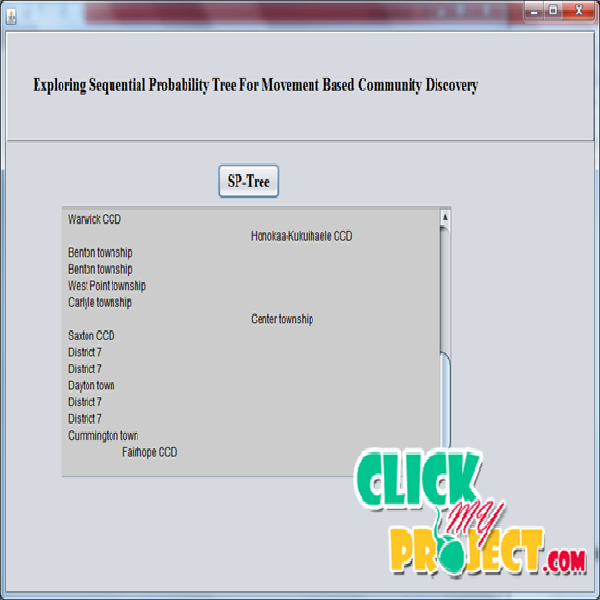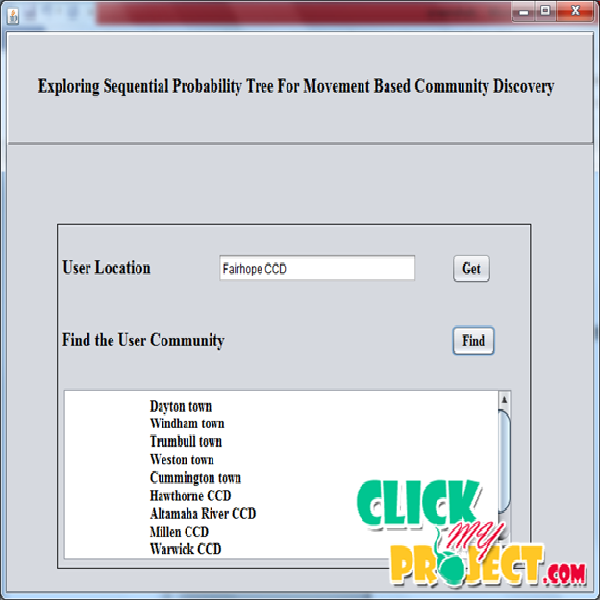Exploring Sequential Probability Tree forMovement-Based Community Discovery
Our Price
₹3,000.00
10000 in stock
Support
Ready to Ship
Description
In this paper, we tackle the problem of discovering movement-based communities of users, where users in the same community have similar movement behaviors. Note that the identification of movement-based communities is beneficial to location-based services and trajectory recommendation services. Specifically, we propose a framework to mine movement-based communities which consists of three phases: 1) constructing trajectory profiles of users, 2) deriving similarity between trajectory profiles, and 3) discovering movement-based communities. In the first phase, we design a data structure, called the Sequential Probability tree (SP-tree), as a user trajectory profile. SP-trees not only derive sequential patterns, but also indicate transition probabilities of movements. This task has several applications, including automated indexing of scientific articles, filing patents into patent directories, selective dissemination of information to information consumers, automated population of hierarchical catalogues of Web resources, spam filtering, identification of document genre. Automated text classification is attractive because it frees organizations from the need of manually organizing document bases, which can be too expensive, or simply not feasible given the time constraints of the application or the number of documents involved. The accuracy of modern text classification systems rivals that of trained human professionals, thanks to a combination of information retrieval (IR) technology and machine learning (ML) technology. The aim of this paper is to highlight the important algorithms that are employed in text documents classification, while at the same time making awareness of some of the interesting challenges that remain to be solved.
Tags: 2014, Data Mining Projects, Java




